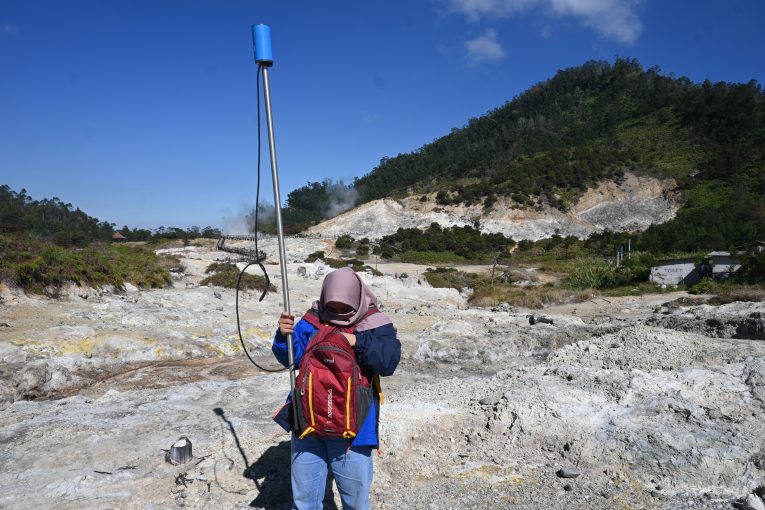
Investigation of the Extent of Hydrothermal Activities of the Sikidang Crater, Dieng Volcanic Complex (Central Java), Using Geomagnetic Method
by Nur Izzati Fitri Miftahcahyani // mentored by Ir. Pri Utami, M.Sc., Ph.D., IPM. // The Sikidang Crater (± 2000 m asl) is one of the active craters in the Dieng Volcanic Complex (DVC). It is situated on the southeastern flank of Mt. Pangonan. The crater is significant for development of both tourism and energy sectors in Dieng. Thermal manifestations inside the crater which consist of boiling mud pools and pots, hot springs, fumaroles, gas vents, steaming and altered ground make the place a popular tourist attraction. They also serve as windows to the shallow subsurface processes and help better understand the dynamics of the Dieng geothermal system. However, the land use of the crater and its vicinity disregards the fact that the actual extent of the hydrothermal activity of the crater has not been figured out, and that the foci of the thermal fluid discharges in the crater often shift. Some agriculture plots, housing areas, as well as tourism and geothermal infrastructures are located within or near the morphological boundary of the crater. The inherent hydrothermal hazard of the crater therefore, must be well mitigated to minimize the negative impacts to the people, as well as their assets. Our research aims to delineate the lateral and vertical extent of the hydrothermal activity of the crater by geomagnetic method. Geomagnetic anomaly in geothermal field occurs due to the difference in the intensity of hydrothermal alteration of the rocks. The equipment used was a pair of Proton Precision Magnetometers GEOTRON G5. Our result shows that low geomagnetic anomaly (-2200 to -400 nT) correlated with demagnetized, hydrothermally altered andesitic rocks covers an area of ≥ 1.15 km2, i.e., more than seven times larger than the area outlined by morphological boundary of the crater. The anomalous zone extends N/NE - S/SW from beyond the areas of inter-volcanic plain between Pangonan and Igir Binem in the north, to the areas beyond Sikunang and Kendil cones in the south. Below the Sikidang mud pool the demagnetized rock mass reaches a maximum thickness of 2000 m. The supporting data, i.e., the fluctuations of the gas discharge, and the seismicity of the DVC indicate that the recent dynamics of the Sikidang Crater is mostly controlled by the internal processes within the crater.
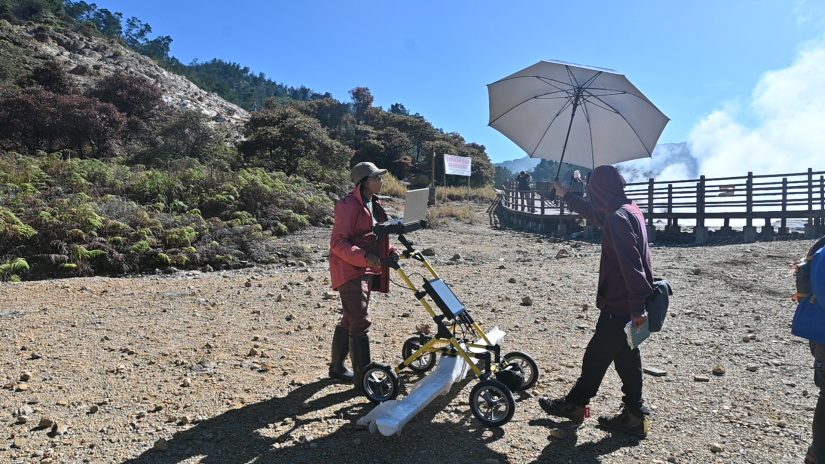
Interpretation of Conduit Distribution in Sikidang Crater, Dieng Geothermal Field using Ground Penetrating Radar (GPR)
by Kanya Kirana Ramadhani Nurapita // mentored by Saptono Budi Samodra, S.T., M.Sc. and Ir. Pri Utami, M.Sc., Ph.D., IPM. // Sikidang Crater (2000 masl) is located in the Dieng Volcanic Complex where most of the volcanoes belong to the type A category. Sikidang Crater is one of the main geothermal manifestations in Dieng Geothermal Field occupied by mud pools, solfatara, fumaroles, mud pot, and altered rocks. These manifestations have potential geological hazards such as toxic gases, base surge, and mud explosions. On the other hand, Sikidang Crater is one of the leading tourist sites in the Dieng area. High level of human activity that increases the risk of disasters. As an effort to prevent and mitigate disasters, it is necessary to know the subsurface geological conditions of the crater. This study aims to determine the geothermal fluid conduit distribution on subsurface geological conditions of the crater. This research uses detailed geological mapping, manifestation observation, and Ground Penetrating Radar (GPR) geophysical survey. The tool used is Akula Geoscanner 9000C running at 64.75 MHz frequency, has a measure horizontal resolution of 0,0089 meters and vertical of > 0.85 meters. Sikidang Crater is located at the southeastern foot of Mount Pangonan and has a horseshoe-shaped landslide ridge in its northwest part. According to Van Zuidam, the crater is classified as a solfatara and fumarole field geomorphology unit. The lithology is dominated by the eruption products of Mount Pangonan which is an andesite breccia. The tectonic structure that affects this area has a northwest–southeast orientation. In general, radargrams result from GPR surveys show various electromagnetic wave reflection properties. At some points, there is a decrease in electromagnetic wave velocity due to contrast in dielectric constant values, which is interpreted as geothermal fluid flow towards the surface. The potential level of geothermal fluid flow is classified into high, medium, low, and none based on the presence of potential points seen in the radargram. Based on the distribution zoning of these potentials, seven potential hazard zones were formed and three of them indicate disaster risk.

Exergetic Analysis of Turbin Inlet Pressure Variation on Second Law of Thermodynamic Efficiency in X Geothermal Power Plant
by Farrizh Noer Abdiellah // mentored by Dr. Ir. Khasani, S.T., M.Eng, IPM., ASEAN Eng // As time goes by, the world's energy consumption continues to increase rapidly. Fulfilling the world's energy needs is the responsibility of each generation as fossil energy reserves are depleting. The importance of geothermal energy in promoting energy sustainability lies in its minimal environmental impact, low greenhouse gas emissions, and small land utilization footprint compared to other conventional energy sources. One of the geothermal fields producing geothermal energy in Indonesia is X Geothermal Field, in Bandung Regency, West Java. X Geothermal Field is in the vicinity of Mount Patuha in West Java which is about 40 kilometres south of Bandung city. X Geothermal Power Plant is characterized by dry steam production wells and has a capacity of 60 MW that can generate electricity. The average gross power production per month is around 38,973 MWh with an average total production per year of 461,000 MWh. This study was conducted to determine the optimal Turbine Inlet Pressure (TIP) value using the efficiency of the second law of thermodynamics or exergy efficiency as one of the main considerations in the analysis. There are also components that are the object of research including turbine, main condenser, gas removal system components, pumps, and cooling tower in the X Geothermal Power Plant system. TIP variations were obtained from simulation results using Aspen HYSYS software by considering existing operating conditions at the site of X Geothermal Power Plant. The analysis setup involves TIP variations in the system from 6.6 bar to 8.2 bar with an interval between variations of 0.2 bar. The analysis was performed using Microsoft Excel software and the properties of the fluid flow were obtained with X-Steam Microsoft Excel Add-Ins by Magnus Holmgren. The results showed that TIP has an influence on the operating conditions although not significant. This study confirms that the larger the TIP, the second law efficiency or exergy efficiency of the system decreases. However, the first law efficiency or system energy efficiency will increase and have an impact on the power generated by the PLTP. Based on these results, it can be concluded that a TIP of 8.2 bar is more optimal than other TIPs with consideration of the efficiency of the first law of thermodynamics, the efficiency of the second law of thermodynamics or exergy efficiency, the power generated by the plant, and the self-use power consumption of the system.
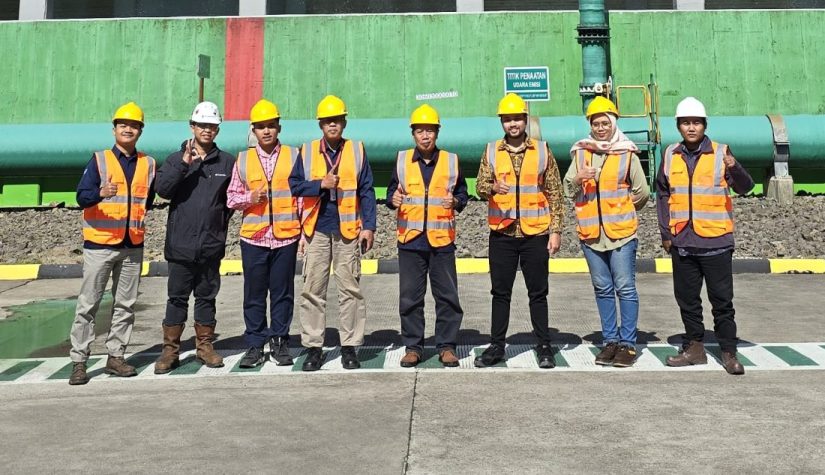
Feasibility Study on The Optimization of Hot Well Pump (HWP) Operation Using Variable Frequency Drive (VFD) for Self-Consumption Electricity Savings at Geothermal Power Plant (PLTP) Unit 1 of PT. X
by Aristo Trixie Prayitno // mentored by Dr. Ir. Khasani, S.T., M.Eng, IPM., ASEAN Eng // PT. X is a company engaged in geothermal energy and manages Geothermal Work Area (WKP) Unit 1 with a capacity of 55 MW. In its operations, WKP Unit 1 uses Hot Well Pumps (HWP) to circulate condensate water from the condenser to the Cooling Tower. However, the electricity consumption by HWP accounts for 36.5% of the total electricity usage in the power station, necessitating measures to reduce energy consumption and improve plant efficiency. The cooler ambient temperature at WKP Unit 1 during nighttime presents an opportunity to optimize HWP performance by reducing its capacity as needed through the installation of Variable Frequency Drives (VFD), which is expected to yield significant energy savings. This study was conducted using daily operational data and plant design data to analyze water flow circulation and energy balance within the geothermal power plant system. Energy balance analysis was carried out on the vacuum condenser system, HWP system, and variations in the cold basin cooling tower temperature to find the relationship between cold basin temperature and HWP capacity. The system installation characteristics were analyzed to identify losses in pipes and fittings. Additionally, calculations were performed to assess changes in HWP operation under different cold basin cooling tower temperatures. The project’s financial viability was analyzed using the Net Present Value (NPV), Internal Rate of Return (IRR), and Payback Period (PBP) methods. The results of the study indicate that the cold basin cooling tower temperature significantly affects the water flow required by the HWP, with a direct relationship between the two. The lower the cold basin temperature, the lower the water flow required by the HWP. The study also shows that the electricity consumption savings from using VFDs on two HWP units in WKP Unit 1 amounts to 765,585 kWh per year, resulting in electricity cost savings of IDR 1,029,522,880.44 per year. The project feasibility analysis indicates that the NPV over 10 years is IDR 361,920,891, with an IRR of 11% and a PBP of 5.98 years. Based on these results, the installation of VFDs on two HWP units in WKP Unit 1 is considered financially feasible, with potential benefits for the company.

Numerical Study of Enhanced Heat Transfer in a Closed Loop Geothermal Coaxial System in Geothermal Wells Using Nanofluid Variations
by Marcellinus Davinci Pramavinto // mentored by Dr. Ir. Khasani, S.T., M.Eng, IPM., ASEAN Eng // Conventional Geothermal Power Plants utilize thermal energy generated within the Earth's crust to heat water in reservoirs. This fluid serves as the primary source to drive turbines that can operate in either liquid or vapor phases, ultimately powering generators to produce electricity. As the temperature of the water increases, the likelihood of phase change to vapor also increases. Over time, the performance of geothermal power production at PLTPs may decline at certain economic thresholds. Wells that are no longer operating optimally will be abandoned, despite containing usable heat. This study aims to investigate the utilization of unproductive geothermal wells using closed loop system. Four different working fluids, water, carbon nanotubes, graphene, and titanium oxide—with a mass flow rate of 1 kg/s are employed in this research. Numerical simulations utilizing COMSOL Multiphysics software are conducted to determine the outlet temperature of the working fluid and the pump power required to move the fluid. The research findings reveal that the titanium oxide (TiO2) working fluid yields a superior outlet temperature compared to the other fluids, while water produces the lowest outlet temperature. The highest outlet temperature recorded reaches 156°C, while the lowest outlet temperature is at 140°C. The pump power required to move the graphene fluid is relatively low at 3048.434 W, whereas the carbon nanotube fluid demands the highest pump power at 3398.48 W.
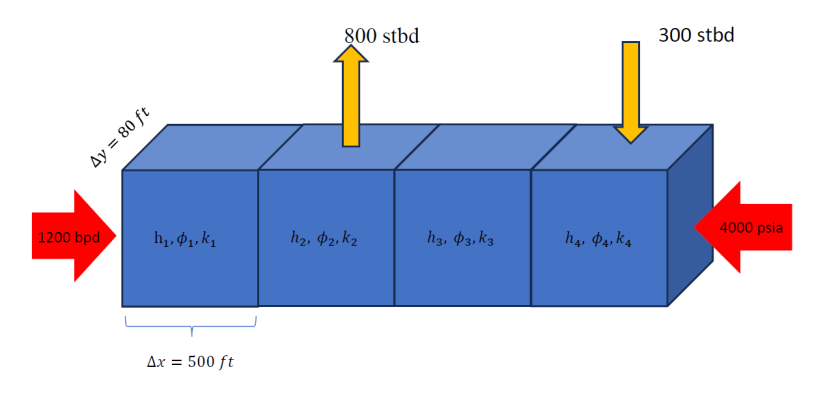
Sensitivity Analysis of The Parameters of Fluid Flow Rate, Reservoir Pressure, Temperature, CO2 Content on The Storage Capacity and Carbon Capture Storage of Carbon Capture Storage Reservoir in Saline Aquifer Using Petrasim Software
by Habib Luthfi Ash Shiddiqie // mentored by Dr. Ir. Khasani, S.T., M.Eng, IPM., ASEAN Eng // Carbon Capture Storage (CCS) is one of the solutions in reducing carbon dioxide content in the air by capturing CO2 in the air then injected into the bowels of the earth. Reservoirs that can be used as CCS can be old oil fields, ex-coal mine areas, and saline aquifer reservoirs. In order to successfully inject CO2 into the bowels of the earth, it is necessary to know the characteristics of the earth's layers and analyze fluid flow in porous media. There are parameters such as permeability and porosity that affect the flow pattern of CO2 in the earth's layers. This final project aims to determine the effect of CO2 injection mass flow rate, reservoir pressure, reservoir temperature, and reservoir CO2 content on reservoir Carbon Capture Storage and CO2 storage capacity. Software numerical simulation using PETRASIM with TOUGHREACT solver and Equation of State (EOS) ECO2N which is often used in fluids containing water, salt, and CO2 suitable for CO2 storage studies in saline aquifers. The results showed that the parameter that greatly affects the Carbon Capture Storage is the mass flow rate. The addition of mass flow rate of 3 kg/s decreased the reservoir life by 55,36% and decreased the storage capacity by 57%. The addition of 5% CO2 content increases the reservoir life by 23,23% and increases the storage capacity by 36,1%. A 10 Fahrenheit increase in reservoir temperature increased reservoir life by 18,64% and decreased storage capacity by 130%. An increase in pressure of 500 psi increased reservoir life by 12,8% and increased storage capacity by 14%.

Numerical Study of Heat Transfer Enhancement in aClosed Loop Geothermal Coaxial System in Geothermal Wells Using Dot Diamond
by Narendra Akarya Wijaya // mentored by Dr. Ir. Khasani, S.T., M.Eng, IPM., ASEAN Eng // Geothermal power plants are power plants that harness the heat energy produced by magma within the earth. The heat from magma propagates through cracks or fissures in the rock formations underground, which are then utilized to heat reservoir fluid or water until it turns into steam. This steam is then used to drive turbines. As production progresses over time, the performance of wells in geothermal power plants will decline. Wells that no longer produce heat optimally will be left inactive, although they still retain thermal energy within them. Therefore, a closed-loop system is employed, which can be installed in existing wells. This system does not require subsurface permeability because it uses closed pipes specifically designed to convey heat transfer fluid through the rock layers and then up to the surface. This study aims to investigate the enhancement of heat transfer value in a closed-loop system within geothermal wells using dot diamond. The study explores three variations of dot diamond quantities: 204, 304, and 1004, as well as three geometric variations of dot diamond shapes: tube, rectangular beam, and triangular prism. Numerical simulations are conducted using COMSOL Multiphysics software to determine the outlet fluid temperature and thermal power output of the closed-loop system. The research findings indicate that the use of dot diamond in geothermal well closed-loop systems can enhance heat transfer from the working fluid. There is a temperature increase in the output of the closed-loop system by 10°C with the use of 204 dot diamonds, a 19°C increase with 404 dot diamonds, and a 39°C increase with 1004 dot diamonds. Regarding the variations in dot diamond geometry, the output temperature of the closed-loop system is found to be 145°C for rectangular beam dot diamonds, 140°C for tube dot diamonds, and 137°C for triangular prism dot diamonds.
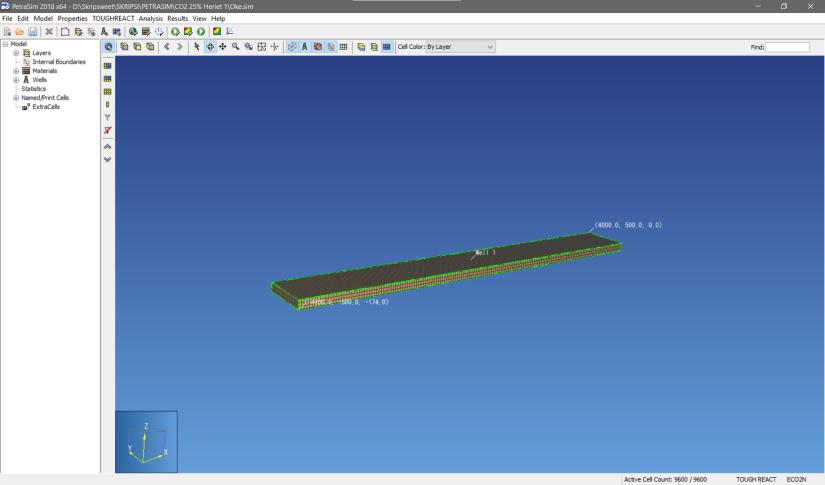
Study of CO2 Injection Simulation of Saline Aquifer Reservoir in Basin Model Using Petrasim Software
by Muhammad Nuzul Furqan // mentored by Dr. Ir. Khasani, S.T., M.Eng, IPM., ASEAN Eng // Carbon Capture Storage (CCS) is a solution to reduce carbon dioxide levels in the air by capturing CO2 from the air and injecting it into the bowels of the earth. Reservoirs that can be used as CCS include old oil fields, former coal mines, and salt aquifer reservoirs. Successfully injecting CO2 into the earth requires knowledge of the properties of the earth's geological formations and analysis of fluid flow in porous media. Parameters that affect CO2 flow patterns in geological formations include permeability and porosity. This final project aims to determine the effect of CO2 content, porosity, and permeability in the reservoir to pressure, temperature, saturation, and SMCO2 parameters. Numerical software simulations using PetraSIM and TOUGHREACT applications and Equation of State (EOS) ECO2N. It is commonly used for fluids containing water, salt, and CO2 and is suitable for the study of CO2 storage in saline aquifers. This simulation is held by variating the CO2 content, porosity, and permeability. The results of this study found that among CO2 content, porosity, and permeability, CO2 content is more influential than porosity and permeability. CO2 content is also more stable than porosity and permeability.
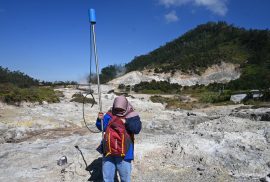
Investigation of the Extent of Hydrothermal Activities of the Sikidang Crater, Dieng Volcanic Complex (Central Java), Using Geomagnetic Method
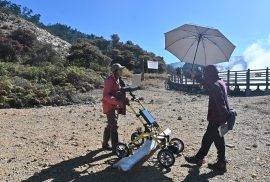
Interpretation of Conduit Distribution in Sikidang Crater, Dieng Geothermal Field using Ground Penetrating Radar (GPR)
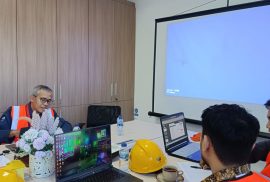
Exergetic Analysis of Turbin Inlet Pressure Variation on Second Law of Thermodynamic Efficiency in X Geothermal Power Plant
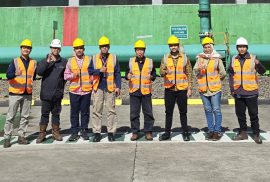
Feasibility Study on The Optimization of Hot Well Pump (HWP) Operation Using Variable Frequency Drive (VFD) for Self-Consumption Electricity Savings at Geothermal Power Plant (PLTP) Unit 1 of PT. X
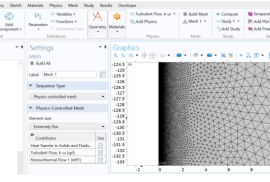
Numerical Study of Enhanced Heat Transfer in a Closed Loop Geothermal Coaxial System in Geothermal Wells Using Nanofluid Variations
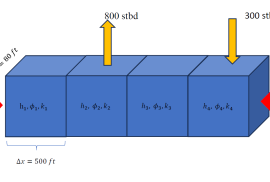
Sensitivity Analysis of The Parameters of Fluid Flow Rate, Reservoir Pressure, Temperature, CO2 Content on The Storage Capacity and Carbon Capture Storage of Carbon Capture Storage Reservoir in Saline Aquifer Using Petrasim Software

Numerical Study of Heat Transfer Enhancement in aClosed Loop Geothermal Coaxial System in Geothermal Wells Using Dot Diamond
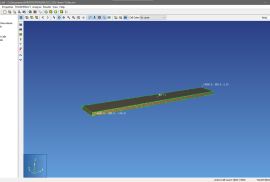
Study of CO2 Injection Simulation of Saline Aquifer Reservoir in Basin Model Using Petrasim Software
